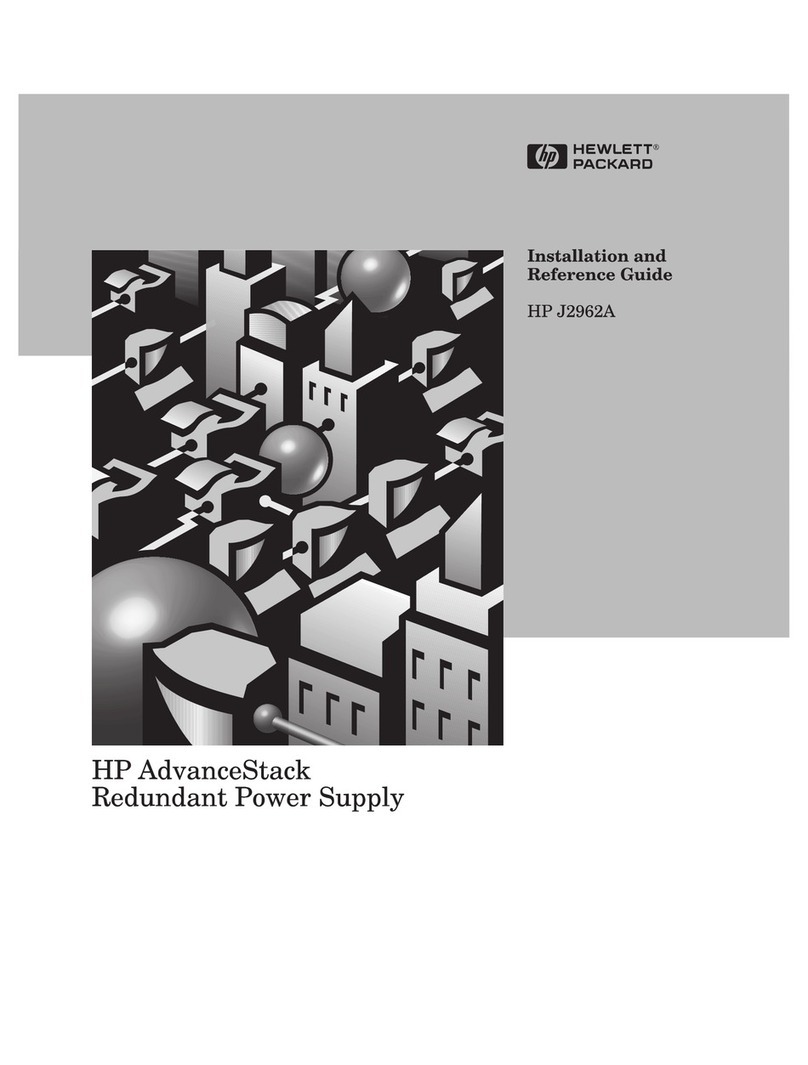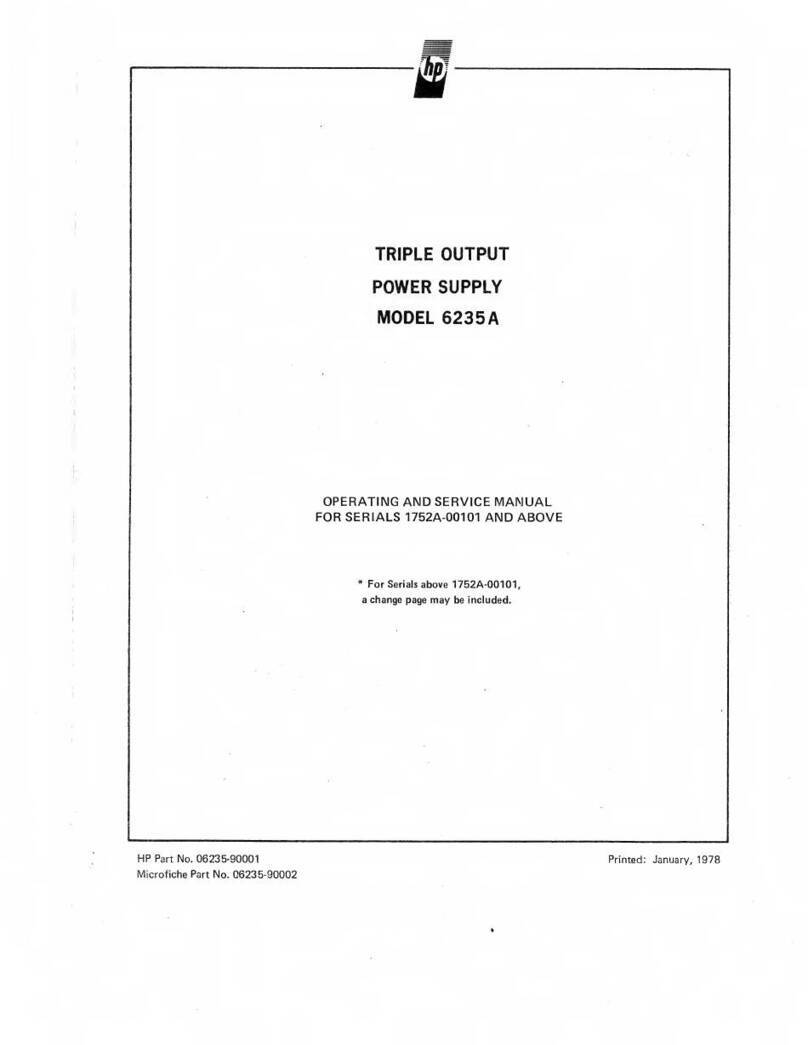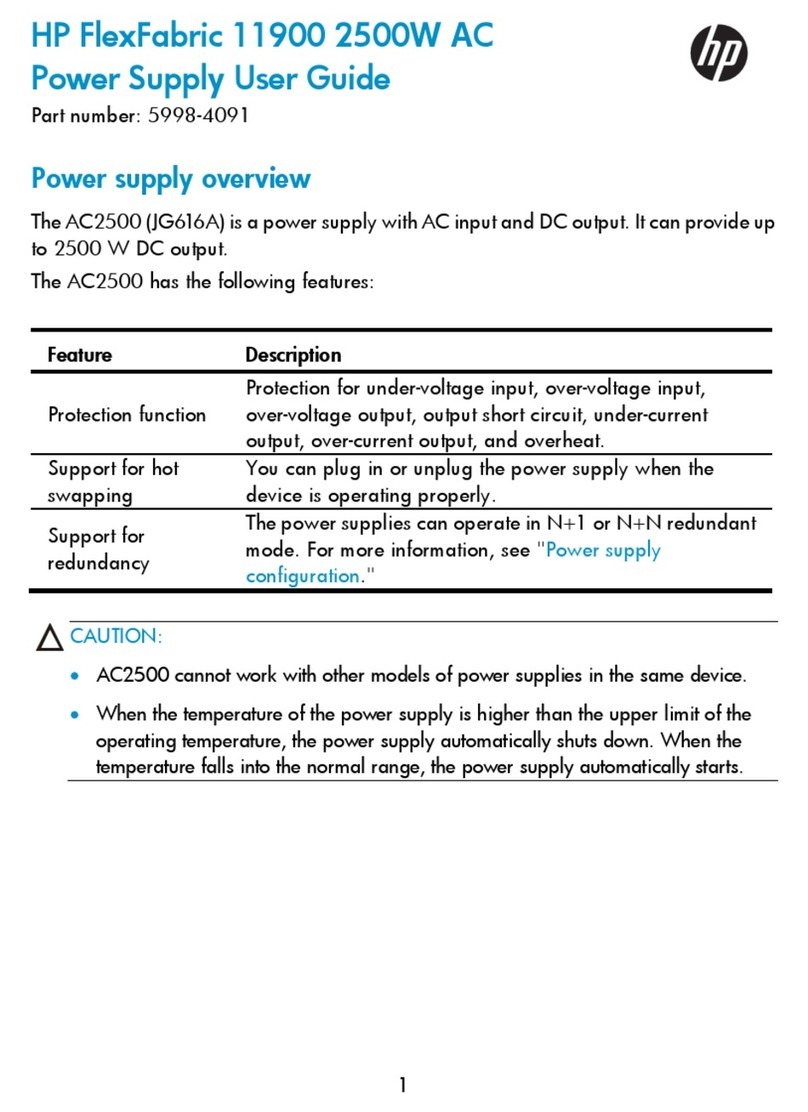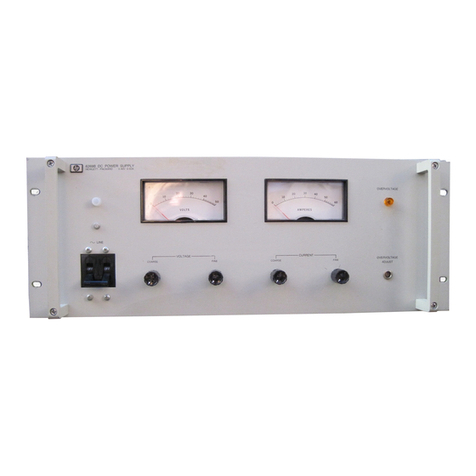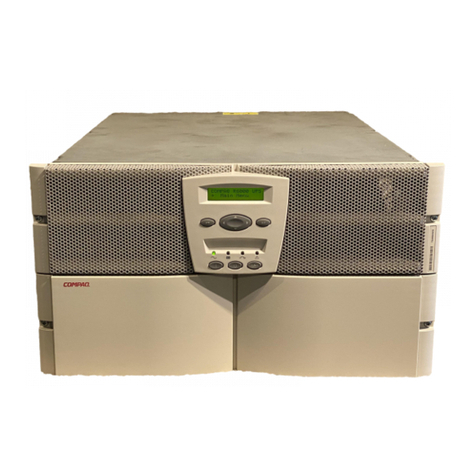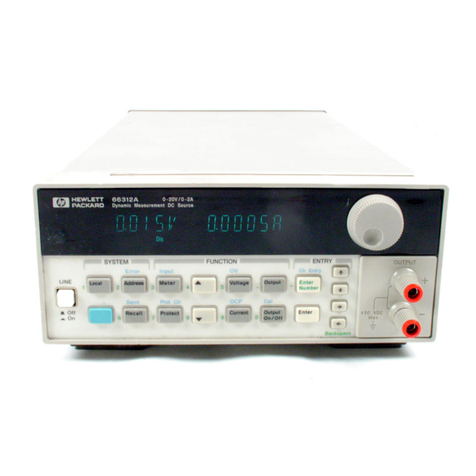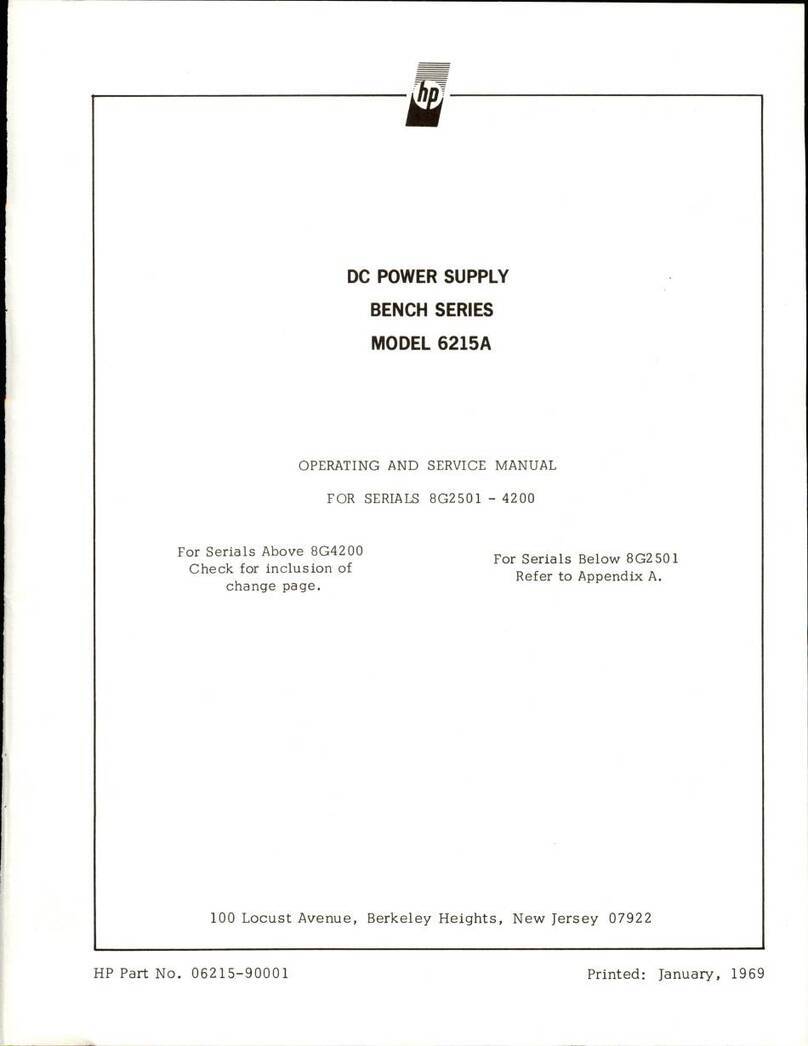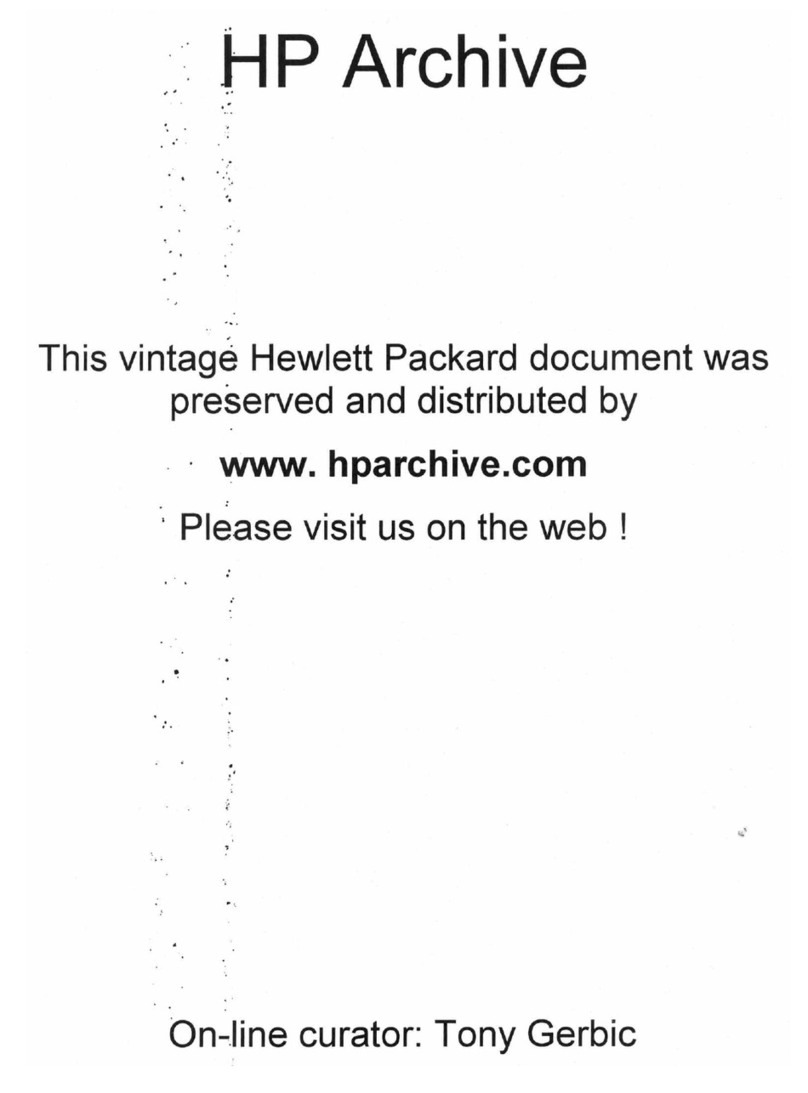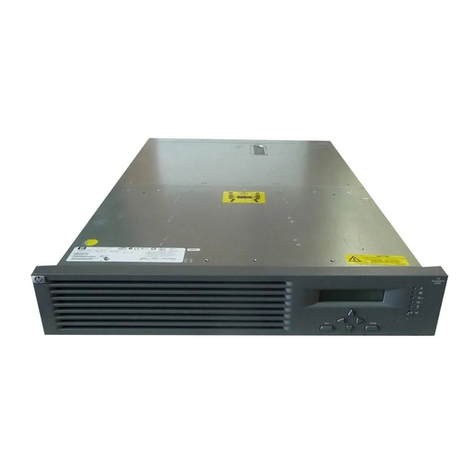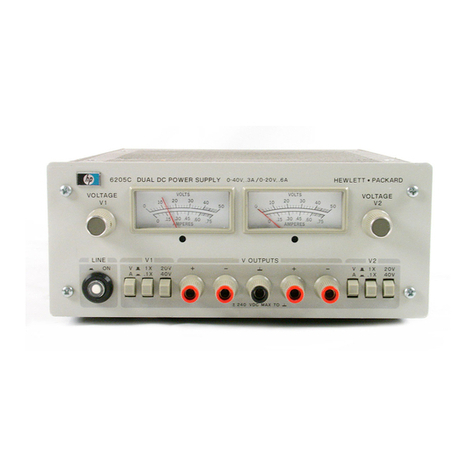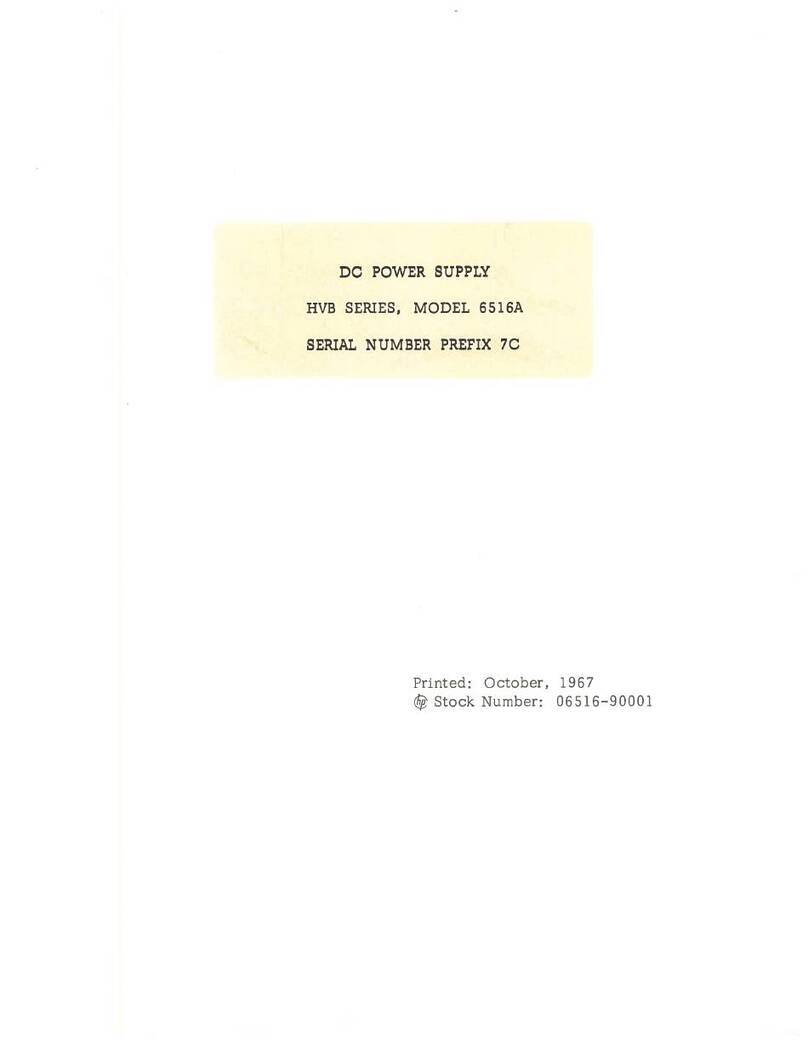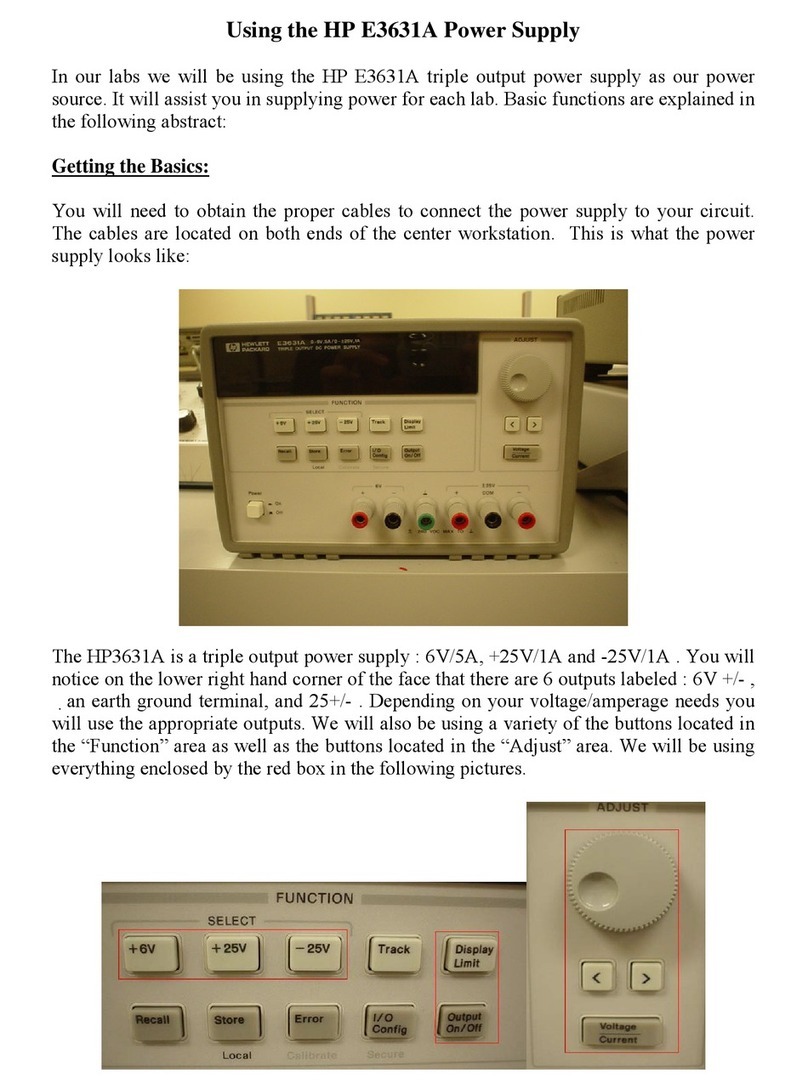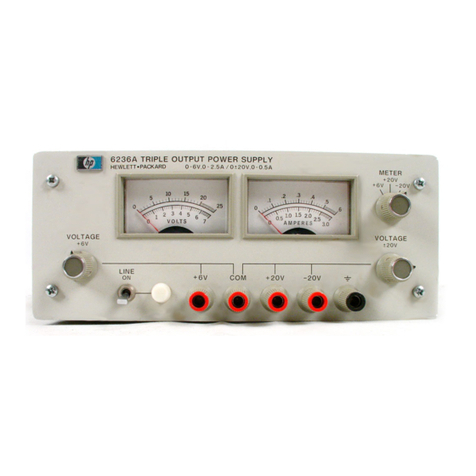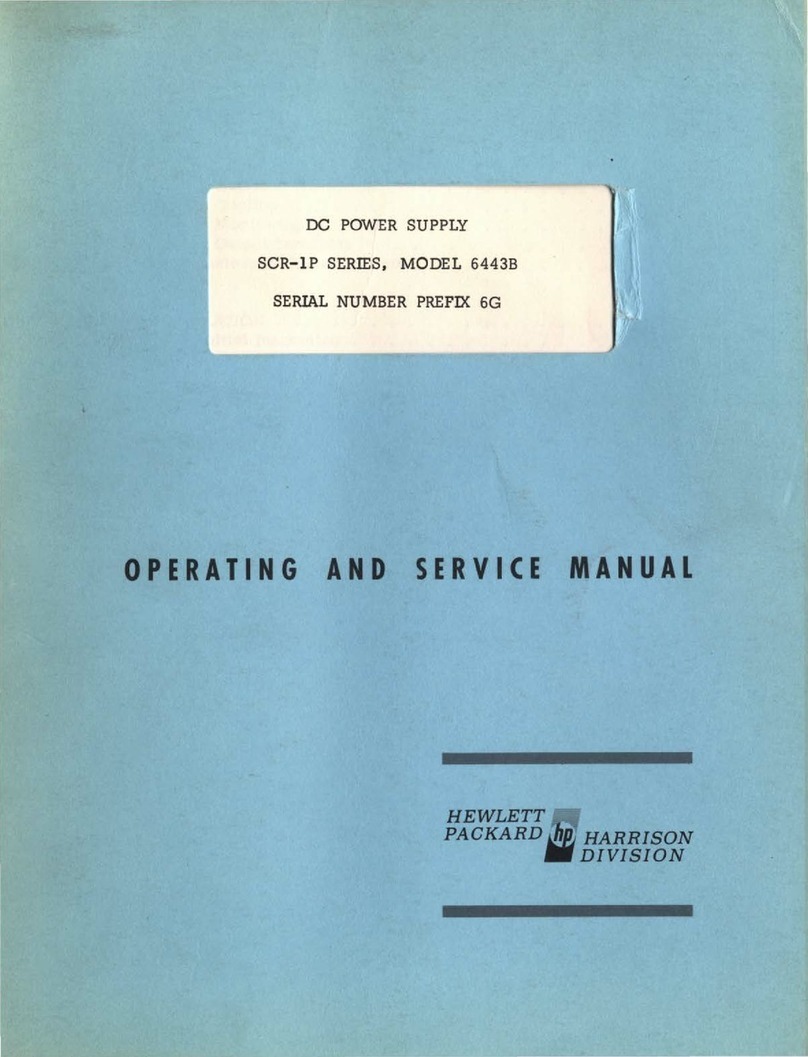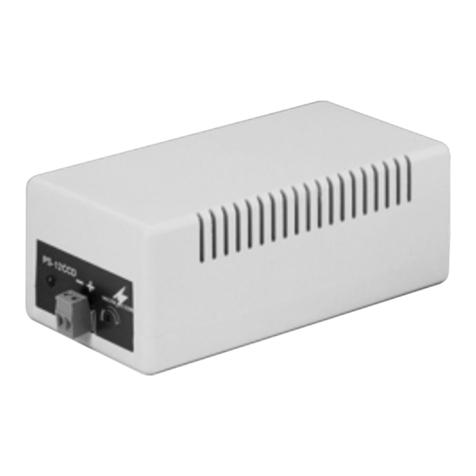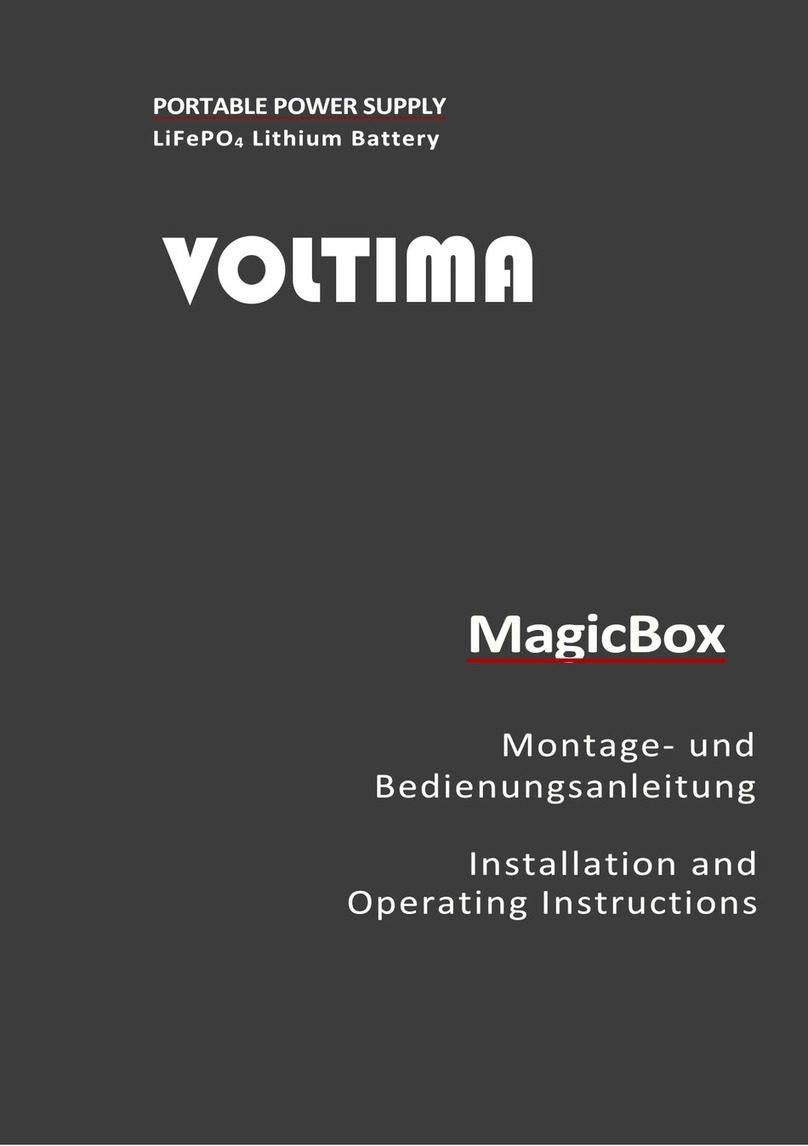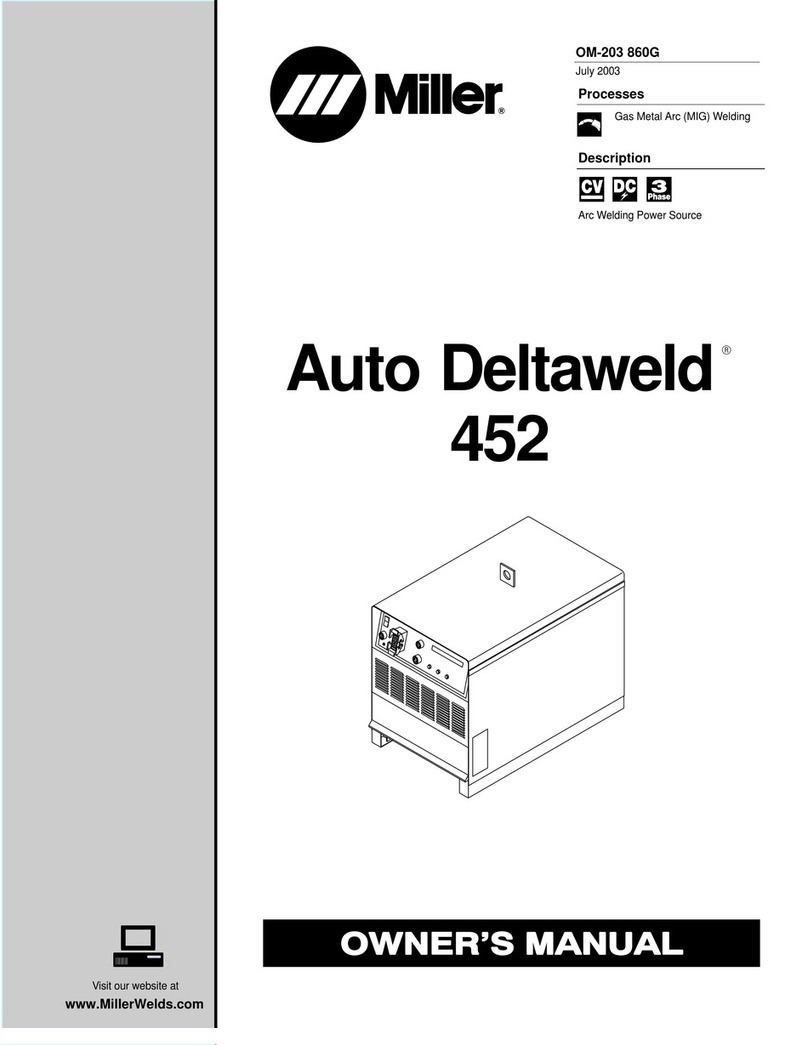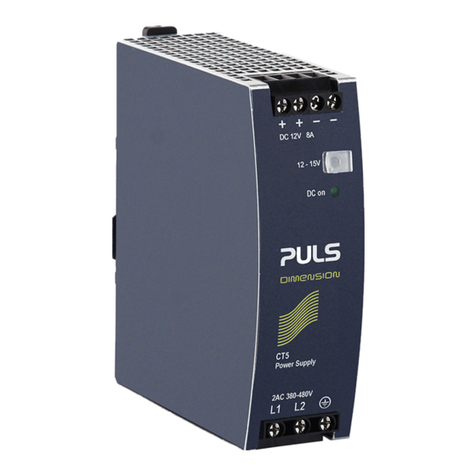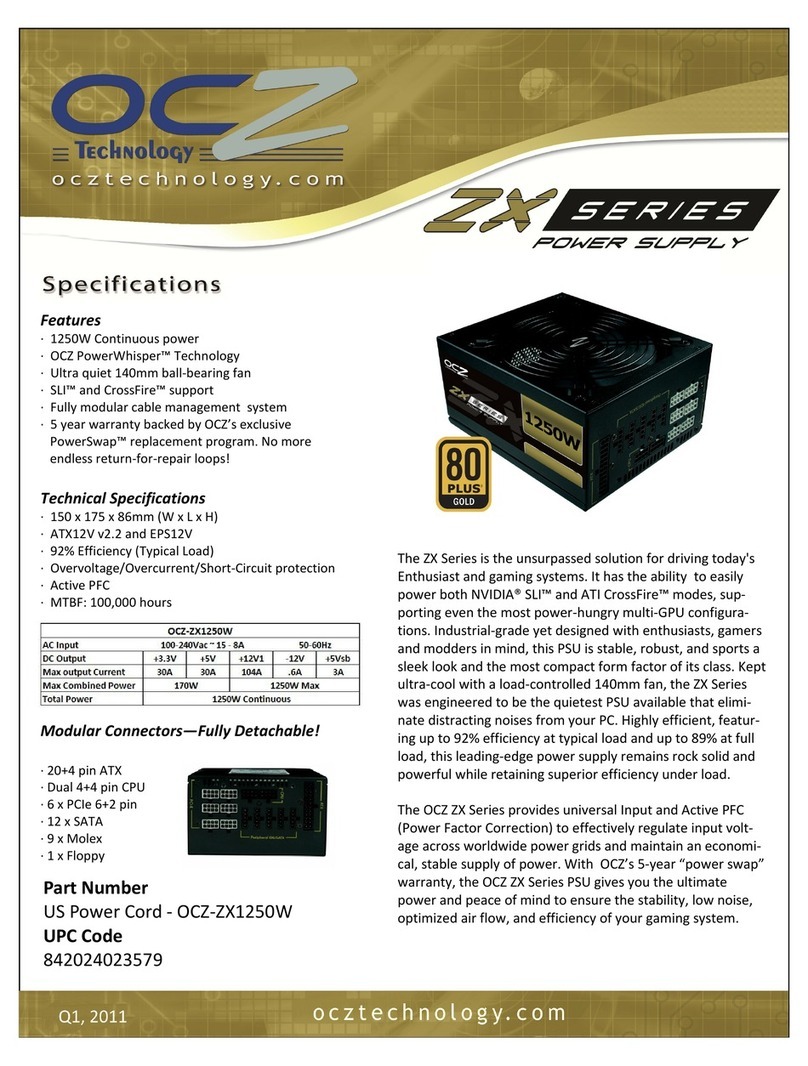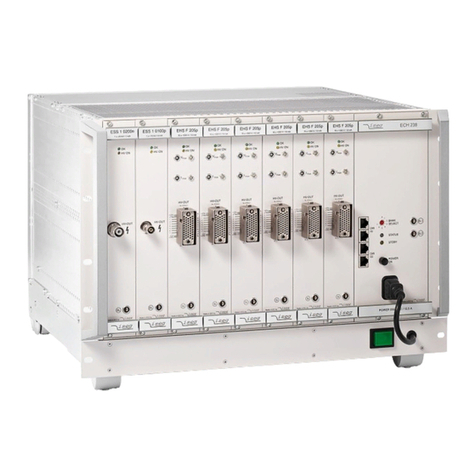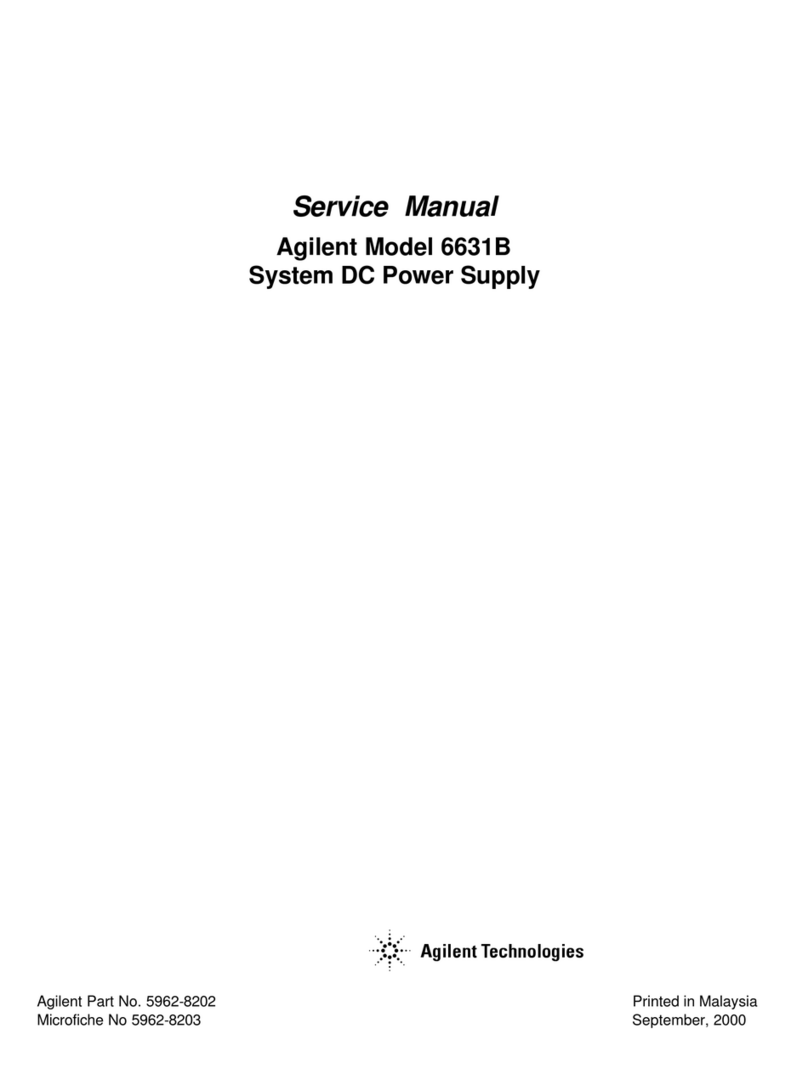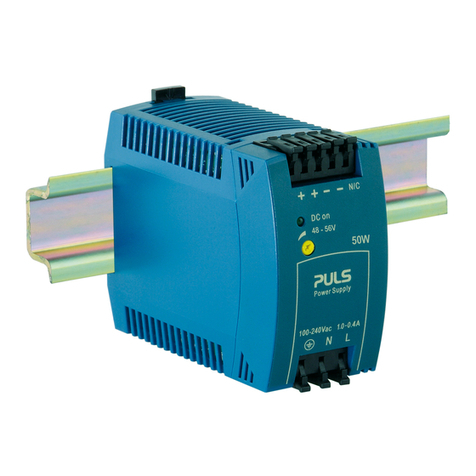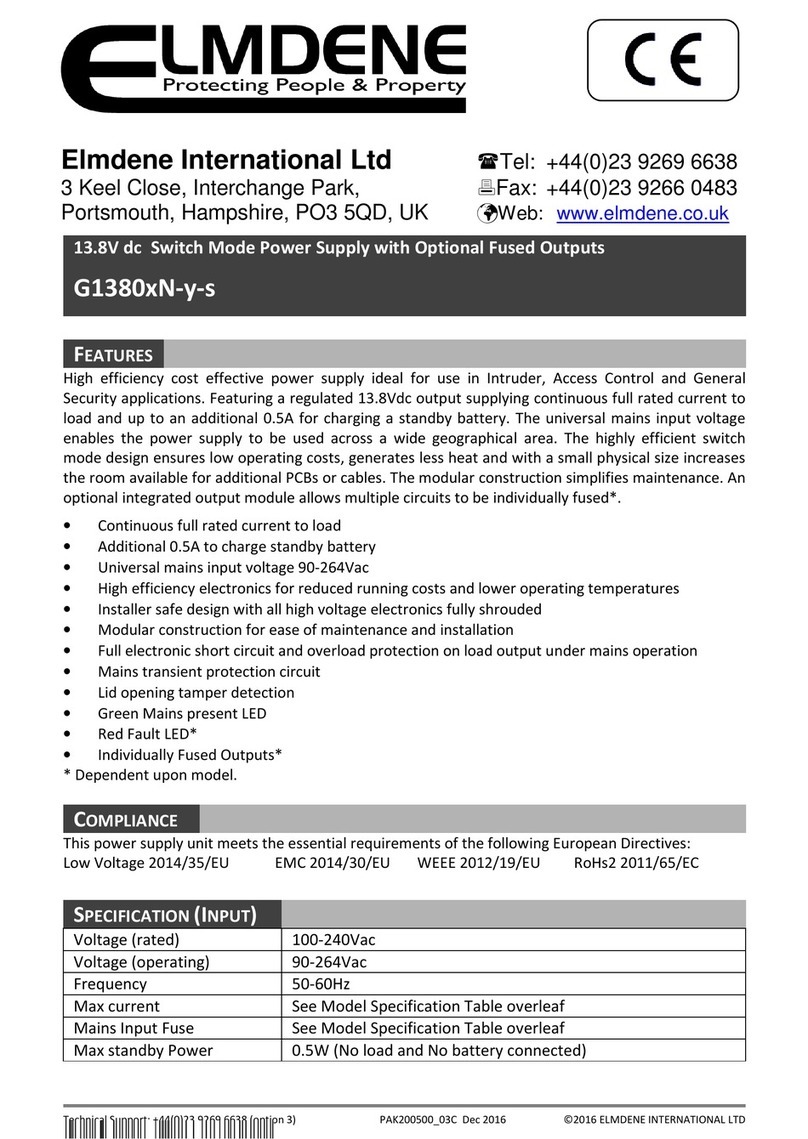
1-2
ducto
bend
well-
SUPP~
adjus
1-3
a swi
serie:
necte
outpu
the
s~
1-5
contr~
terna:
The s
stant
versa
prese
put c
1-6
voltas
minal
curre
ditior
tectic
powel
curre~
SUPP~
accer
1-8
quire
cept
1-10
connc
connl
SECTION I
GENERAL INFORMATION
ESCRIPTION
:ode1 6515A (Figure 1-1) is an all semicon-
ligh voltage supply suitable for either
r relay rack operation. It is a compact,
gulated Constant Voltage
/
Current Limited
:hat will furnish 1600V at 5mA or can be
j
throughout the output voltage range.
nis supply
is
series regulated and utilizes
ned output piggyback technique; four
:onnected low voltage supplies are con-
~iathe VOLTAGE RANGE switch to the
(+)
erminal.
A
fifth supply is connected via
esregulator to the
(-)
output terminal.
VERLOAD PROTECTION
le VOLTAGE RANGE switch and VERNIER
select the constant voltage level. An in-
otentiometer selects the current limit level.
ply will automatically crossover from con-
)Itage to current limit operation and vice
the output current or voltage exceeds these
evels. Detailed characteristics of the out-
ent limiting are given in paragraph 3-7.
he power supply is protected from reverse
(positivevoltage applied to negative ter-
)y an internal protection diode that shunts
across the output terminals when this con-
xists, clamping the reverse voltage. Pro-
from reverse current (current forced into the
upply in the direction opposite to the output
must be provided
by
preloading the power
(Paragraph 3-1 8). The power supply cannot
:everse current without damage.
OOLING
onvection cooling is used. No fan is re-
The power supply has no moving parts (ex-
.
meter movement).
lUTPUT TERMINALS
lutput power is available via two UG-931/U
:ors at the rear of the power supply. Mating
:ors (UG-932/U) are supplied with the unit.
The output terminals are isolated from the chassis
and either the positive or the negative terminal may
be connected to the chassis by shorting the center
pin and case of the applicable UG-931/~connector,
or by grounding a wire from the connector to the
chassis. The power supply is insulated to permit
operation up to 1,000 vdc off ground,
i.
e. the max-
imum potential between either output terminal and
ground shall not exceed
2.6
KV
DC.
1-11 SPECIFICATIONS
1-12 Detailed specifications for the power supply
are given in Table
1-1.
1-1 3, OPTIONS
1-14 Options are factory modifications of a
standard instrument that are requested by the
customer. The following options are available for
the instrument covered by this manual. Where
necessary, detailed option information is included
throughout the manual.
Option No. Description
Three Digit Graduated Decadial
Voltage Control: Includes a cali-
brated 10-turn control replacing the
10-turn vernier to provide resettabil-
ity within 0. 1%.
1-1
5
ACCESSORIES
1-16 The accessories listed in the following chart
may be ordered with the power supply or separately
from your local Hewlett-Packard sales office.
(Refer to list atrear of manual for addresses.)
Part No. Description
8" Black Handle that can be at-
tached to side of supply.
14513A Rack Kit for mounting one
3 l/2"
-
high supply. (Refer to
Section I1 for details.
)
Rack Kit for mounting two
3 1/2"
-
high supplies. (Refer to
Section I1 for details.
)
